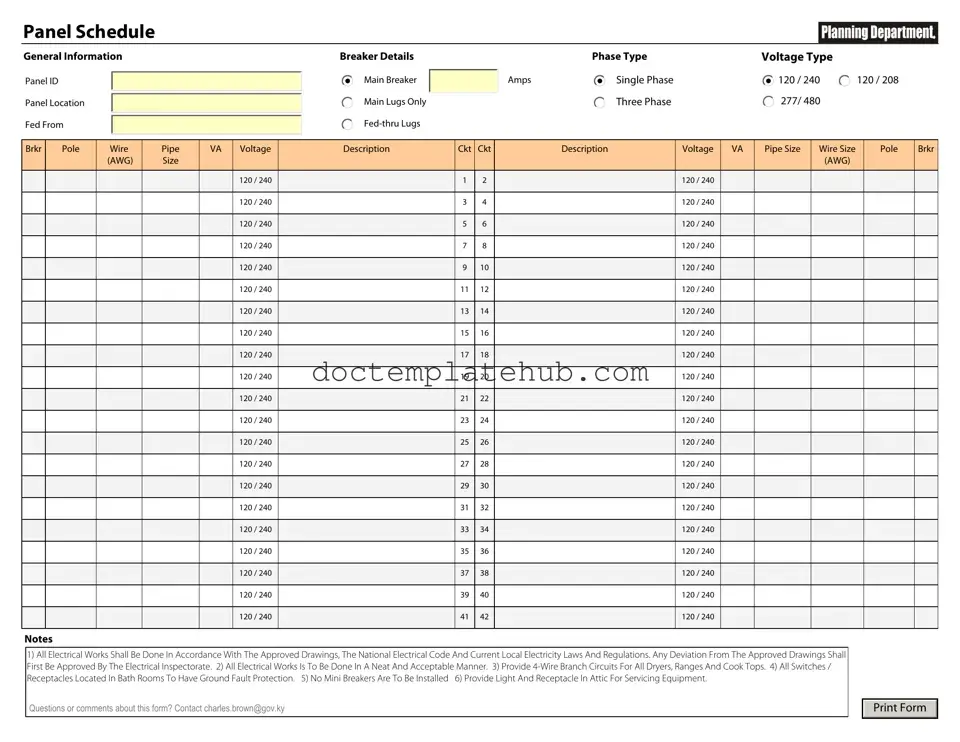Fill Your Electrical Panel Schedule Form
The Electrical Panel Schedule form is a crucial document that outlines the distribution of electrical circuits within a building's electrical panel. This schedule helps ensure proper load balancing, safety, and compliance with electrical codes. Understanding and accurately filling out this form is essential for effective electrical management, so be sure to click the button below to complete it.
Fill Out This Form
